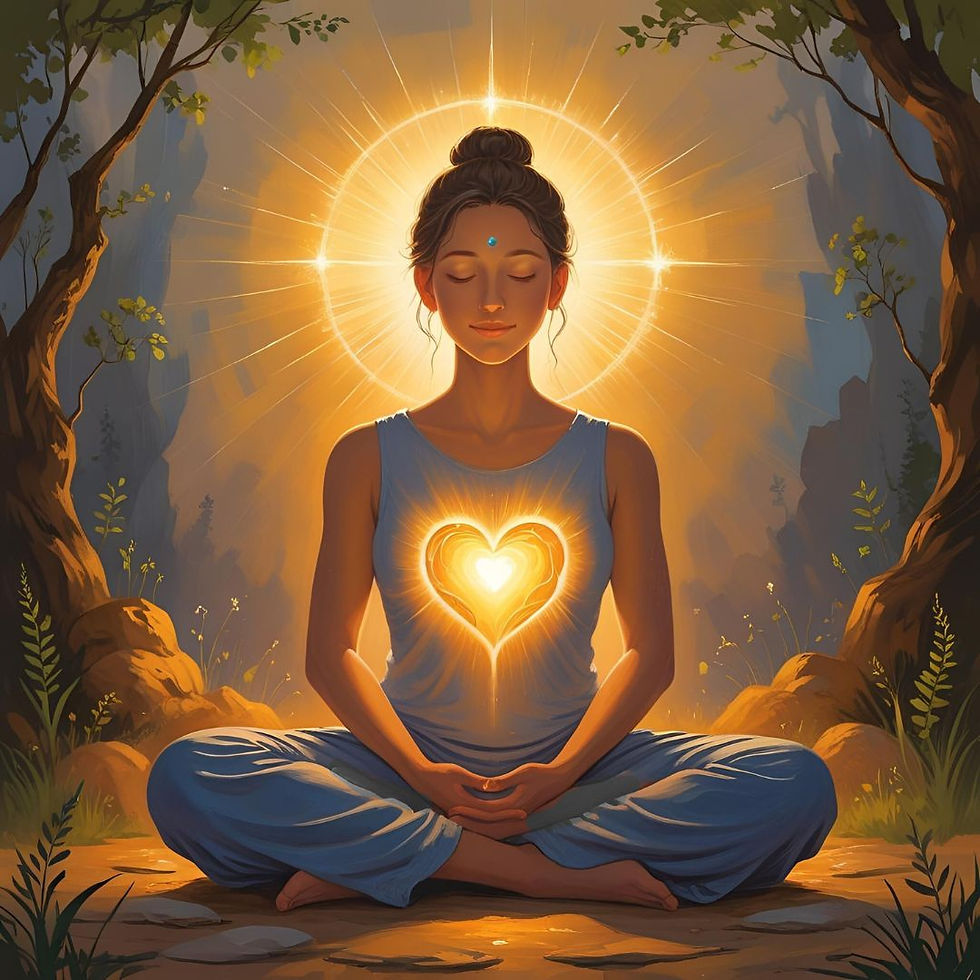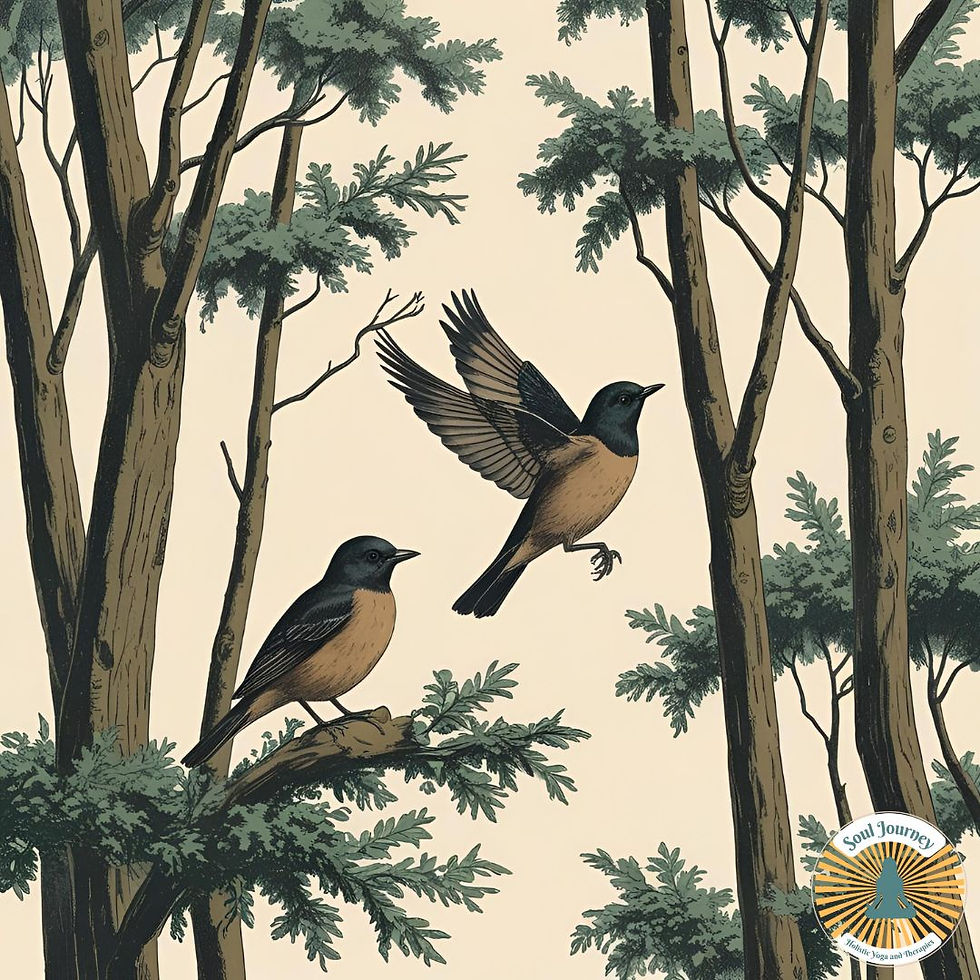The Yamas and Niyamas: Exploring Svadhyaya
- sjholisticyoga
- Jul 26
- 3 min read
Svadhyaya is one of those quietly powerful practices that lives at the heart of yoga. It sits among the Niyamas, the internal disciplines outlined in the Eight Limbs of Yoga, and it is often translated as "self-study." But this translation only scratches the surface. Svadhyaya is not simply an intellectual exercise; it is a sacred, ongoing invitation to remember who we truly are.
More Than Self-Reflection
In our everyday lives, we are wrapped in layers — our roles, our fears, our to-do lists, our identities. We often think, I am tired. I am anxious. I am successful. I am not enough. These stories become the coats we wear, and we forget there is anything underneath.
Svadhyaya invites us to begin unbuttoning those layers. Not to reject them, but to see them clearly — and gently, with compassion, peel them back. Beneath all the roles and reactions, who is there? Who is watching?
This is where the practice of the seer comes in. In yogic philosophy, the seer, or drashta, is the witnessing consciousness — the part of us that can observe without attachment. When we begin to rest in that space of quiet awareness, we begin to glimpse Atman — the true Self. And in time, we may begin to sense what the ancient teachings whisper:
Atman is Brahman.
The Divine within us is not separate from the Divine in all things. The light in you is the same light that pulses through the universe.
The Divine Hidden Within

There is a beautiful story from the East that paints this truth with simplicity and humour:
When the world was young and humans had just been created, God gathered the council of elders. With a sigh, He said, “I’ve made a mistake. These humans will always be calling for me — asking, demanding, praising, pleading. I will never get any rest.”
The elders offered suggestions: hide on a mountaintop, sink beneath the ocean, escape to the moon. But God shook His head. "No... humans are clever. They will eventually find me." Then the eldest elder leaned in and whispered something in His ear. God’s face lit up with delight. "Yes! I shall hide inside them. They will never think to look there."
And so He did.
This story captures the essence of Svadhyaya: the Divine has always been within. We simply forget. Yoga reminds us to turn inward and remember.
Practising Svadhyaya on the Mat
In asana practice, Svadhyaya is not about perfecting the pose — it’s about noticing who we become in the pose. Can we watch ourselves without judgment? Can we observe the stories that arise and gently return to the breath?
A simple breath practice like *dirga pranayama* — three-part breath — becomes a beautiful expression of Svadhyaya. As we breathe into the belly, ribs, and chest, we touch the physical, energetic, and emotional layers of our being. With each exhale, we soften, returning to the witness within.
Two Birds in a Tree

The Upanishads offer another poetic image: two birds sit in the same tree. One bird flits from branch to branch, eating, chasing, striving. The other bird simply watches. Most of us live as the flitting bird — reacting, doing, reaching. Yoga invites us to become the watcher, to rest in the awareness that simply sees.
This shift — from doing to being, from identifying to witnessing — is where Svadhyaya becomes transformative. We stop confusing ourselves with our thoughts, our emotions, our stories. We return to the quiet light within.
The Practice of Returning
Svadhyaya is not something we master. It is a path we walk over and over again — a returning, a remembering. Each time we pause to observe ourselves with compassion, each time we soften into presence, we peel back another layer.
We may not always find what we expect. But beneath it all, waiting patiently, we see the sacred presence that has never left us. We find the light that was hidden in plain sight.
And that is the heart of Svadhyaya.
“Humee Hum Brahm Hum” — We are We. We are the Divine.







Comments